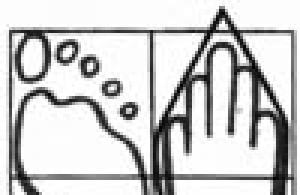Brief information about the company:
Brand name:"Rolls Royce" (Rolls Royce)
The country: England
Specialization: production of luxury cars
Rolls-Royce Motor Cars Ltd manufactures automobiles upper class under the Rolls-Royce brand of the same name. History of Rolls-Royce began at the dawn of the twentieth century...
The company was opened in 1904 by businessman and engineer Charles Rolls and Henry Royce, whose names are included in the name of the company and brand. famous logo looks like two letters R on a black background with signatures.
In the first batch, the company produced several cars with two cylinders (models 12PS, 15PS, 20PS, 30PS), three, four, six (divided into blocks of 2 and 4 cylinders) and an eight-cylinder "Legallimit".
New cars quickly gained popularity, especially after car racing, in which they won prizes. The first victory was brought by Rolls-Royce 20PS with 20 horsepower in the Tourist Trophy rally (1906). In Ormond Beach, Rolls-Royce set a record for cars under 60 hp.
However, the true birth of the company is considered to be 1906, when the Rolls-Royce 40/50 HP was released, which was given the name "Silver Ghost". "Silver Spirit" has become one of the most famous and popular cars in the world.
In 1925, the successor to the "Silver Spirit" Rolls- Royce Phantom I, which, however, did not have the same success and was eventually replaced by Rolls-Royce Phantom II, in which the company redesigned the design and handling of the model.
In 1931, rival company Bentley, specializing in the production sports cars and limousines, was taken over by Rolls-Royce.
Rolls-Royce became such a prestigious car that in the 50s. cars of this brand began to be ordered by fans from elite circles around the world, including members of the British royal house.
However, in 1971, the company was on the verge of ruin, from which the British government brought the company out, investing 250 million dollars in production.
Having received rescue funds, the company released new models: the Rolls-Royce Corniche and Rolls-Royce Camague cabriolet, in the development of which foreign designers took part for the first time.
Another Silver Spirit with V-engine and the Silver Spur were released in 1982. and gained great popularity among buyers in the USA. Then the models were improved and named respectively Silver Dawn and Rolls-Royce Flying Spur.
The face of the company today is the Silver Spur II Touring Limousine, which only the richest gentlemen of the world can purchase.
BMW in 1998 took control of Rolls-Royce, and the Bentley brand went to Volkswagen.
2 years after the restructuring, 2 new items were released on the Silver Seraph chassis: the Corniche convertible and the 4-door Park Ward sedan, which were designed to replace the old models and please many famous rich people with this.
However, since 2003 the Rolls-Royce brand becomes the absolute property of BMW, and the factories in Crewe begin to be managed by Volkswagen release vehicles with the Bentley brand only.
A suite that has its roots in ancient times in the history of England. The concern for its production is owned by BMW. Price Rolls Royce Phantom is high. But for true connoisseurs of elegance and unique British gloss, characteristic of this model, this is nothing. They are willing to pay a high price to become the owner of this car.
Stages of development
The Rolls Royce Phantom, like other cars of this brand, is manufactured by Rolls-Royce Motor Cars Ltd. She began her activity in 1904, thanks to the efforts of the merchant Charles Rolls and the engineer Frederick Royce.
The logo was 2 letters R, written in an academic font and interconnected. Until 1933, the letters were written on a red background, but then, when the last founder of the company died, the background was changed to black.
The first car was produced in 1904 in Manchester. It is now fully assembled and owned by the Love family. The owners of the company sought to buy this piece of their history, but could not. One can only guess at the amount they offered for the car.
During the first few years, a series was released small cars: 12PS, 15PS, 20PS, 30PS.
Rolls-Royces took part in motor racing and often returned from there with a victory. Largely due to this, they gained popularity very quickly. For the first time, a car won a victory on the track of the Tourist Trophy rally in 1906. The 20PS model with 4 cylinders and 20 hp participated in the race. This was followed by a series of victories in various competitions and several records. All cars participating in the races were developed on the basis of the Rolls-Royce Prototype.

But the real success of the company was due to the release of the Rolls-Royce 40/50 HP chassis in 1906. The serial number was already 60551 at that time. This model was later called the "Silver Spirit".
successor to this legendary model became the lesser-known Rolls Royce Phantom 1, which was released in 1925. He was not popular due to handling problems and old-fashioned design. Nevertheless this model More than 2,000 pieces were produced. In 1929, the second generation of the Rolls-Royce Phantom went on sale.
The year 1931 is characterized for the company by the purchase of a rival company, Bentley, known for its reliable, expensive cars. But the Bentley brand was preserved and exists to this day.
Rolls-Royces of the luxury class after 1949 seemed to be returning to the past. This can be seen already from the titles: "Silver Ghost", "Silver Dawn", "Silver Cloud". In addition to them, in 1965, " silver shadow". The 4th and 5th generations of the Rolls Royce Phantom were produced on the same chassis as the Silver Cloud.
In the 50s, the prestige of the company reached incredible heights. Even the royal family used their cars. Owned as many as five models:
- "Rolls-Royce-Phantom 4" (1955);
- Rolls Royce Phantom 5 (1960);
- "Rolls-Royce-Phantom 5" (1961);
- "Rolls-Royce-Phantom 6" (1978) - 2 pcs.
Merger with other companies
The popularity of the products did not save the company from collapse. In 1971, the concern was declared bankrupt. He was saved by the government, investing about a quarter of a million dollars. The production of the car of this brand continued.

In 1998, the BMW concern became the head of the company. During the fight for the Rolls-Royce German company Volkswagen received the car factories producing Bentley models and those located in Crewe. And since 2003, the BMW concern has completely taken over the Rolls-Royce brand.
Main characteristics
The first Rolls-Royces produced before 1906 had two, three or four cylinders. There were even six-cylinder models that were split into two separate blocks. One contained 2 cylinders, and the other 4. Even the Rolls-Royce-Legallimit was released, which consisted of 8 cylinders.

Rolls-Royce Phantom vehicles 5th generation and above have spar frame, power steering, hydromechanical box gear shifting.
Rolls Royce Phantom today
Currently, the cars of this brand are still popular with lovers of the classics. Therefore, manufacturers continue to produce a car. "Rolls-Royce-Phantom" today can be purchased in several modifications, differing for the most part in the body.
Since 2003, the Rolls Royce Phantom has been produced, the characteristics of which are as follows: a sedan body, 4 doors, an engine capacity of 6.7 liters. and power 460 hp
Since 2006, the production of the four-door Rolls-Royce Phantom Extended sedan begins. Gas engine 6.7 l. allows you to reach a power of 460 hp. Up to 100 km / h accelerates in 6.1 s. Six-speed automatic transmission. Rear drive.
Since 2007, the production of a two-door convertible began, and since 2008 - a coupe.
Price
The cost of Rolls Royce Phantom varies depending on the year of production and many other characteristics. The average price for a Rolls-Royce in Russia is as follows:
- 2003 onwards - more than 6 million rubles.
- 2009 onwards - more than 13 million rubles.
- 2011 onwards - 22.5 million rubles.
- 2012 onwards - 28.7 million rubles.
- 2013 onwards - 25 million rubles.
The price is for cars with basic equipment.
Whatever the cost of Rolls-Royce cars, there will always be those who want to buy them. After all, they are characterized by comfort and aristocracy, reliability and durability. And such things are valued at all times.
It seems that Rolls-Royce is as solid, unbreakable and solid as the luxury executive cars it produces. However, there were periods in the history of this brand when it could not find a livelihood and the English public once again questioned the expediency of continuing to support this giant, which only brings losses to the country. However, every time there were supporters of the revival of Rolls-Royce, who convinced everyone that the company is one of the objects of the historical heritage of the state, deserving honor and respect. Rolls-Royce can tell us how some of the most expensive executive cars in the world were made.
founding fathers
No matter how much supporters of various versions argue about this, but without Frederick Henry Royce manufacturing firm Rolls-Royce would not exist. As the son of a bankrupt miller, at the age of 10 he was forced to find a job - first as a paperboy, and then as a worker. Despite the fact that he had to deal exclusively with physical labor, the guy did not lose heart and was engaged in self-education in his spare time. In particular, he studied French and German, as well as the basics of electrical engineering. Due to his penchant for engineering, he was soon adopted by the designer lifting equipment to the Hiram Maxim plant, which we know from the famous machine gun that received . At the same time, Royce lived quite modestly - he saved money all his life, and in 1903, when he was 40, he opened his own mechanical workshop under the name F.G. Royce & Co., which later became the first production base of Rolls-Royce.
But the other founder of Rolls-Royce, Charles Stuart Rolls, was a hereditary aristocrat from Wales, and the full heir to the family estate. Being a rich and intelligent man, he received two higher educations, but did not seek to put the knowledge he had gained into practice - after all, during his studies he became interested in cars. On the Peugeot Phaeton donated to him by his father, Rolls even set one of the speed records. Seeing in your passion profitable business, in 1902, a young aristocrat opens the company C.S. Rolls & Co., which was engaged in the import of French cars. However, the history of Rolls-Royce would never have begun if Rolls had not been willing to create.

Start
Future founder Rolls Royce, Henry Royce, in 1903 acquired french car Decauville brand. The car was so imperfect and unreliable that the self-taught engineer had a burning desire to make his own vehicle that would fully meet his personal quality standards. This year, Royce assembled three cars, the power of which was 10 Horse power. They did not differ in any technical innovations, however, they had excellent build quality and use exclusively reliable parts- that is, features that are currently bearing the Rolls-Royce brand.
All of England soon started talking about these vehicles - what’s there, even the Russian magazine “Behind the Wheel” in 1903 wrote about the amazing creation of the mechanic Royce. It so happened that the automobile enthusiast Charles Rolls, who was just looking for a partner who could help him create his own automobile factory, also heard about it. The founding of Rolls-Royce took place on May 1, 1904 in the city of Manchester in the restaurant of the Midland Hotel, where there was a mutually beneficial cooperation between two entrepreneurs.

In 1904, the assembly of automobile chassis began, on which the Rolls-Royce brand was already affixed, and not just the name of engineer Royce. At the request of the client, they could be equipped with engines with a number of cylinders from 2 to 8. At the same time, the most powerful motor, installed on a car with its own name "Legalimit", had an advanced V8 layout for that time. There was no Rolls-Royce - it was assumed that the client would order them himself, guided by his artistic taste. These cars also gained excellent fame very quickly - thanks in large part to the victories in the races, where many eminent racers, including Charles Rolls, sat behind the wheel of them. In total, until 1907, 100 Rolls-Royce cars were created, which were built on a common chassis, called the "prototype".
The first real Rolls-Royce
At the end of 1906, at the international transport exhibition, new model Rolls-Royce 40/50 HP, which was not like the early "prototypes" of the company. It was based on a very powerful one, and at the back there were three semi-elliptical springs - two longitudinal and one transverse, which gave such a vehicle an unprecedented smooth ride. The power unit was a 7-liter engine with six cylinders arranged in a row, the power of which was not disclosed to the general public. It was then that the tradition of Rolls-Royce to refer to power as “enough” was born, which was abandoned relatively recently.
Initially, under the name Rolls-Royce 40/50 HP, 12 chassis were produced, and the thirteenth became fateful for the company - the body for it was made by the Barker studio, whose designers gave the surfaces silver color and covered with imitation precious metal all . Thanks to this, the model received the name "Silver Ghost", which after a few years began to be recognized in all corners of the world. At the same time, the Rolls-Royce emblem was registered, which consists of two letters R intertwined. Legend has it that Henry Royce, having lunch at a restaurant, saw a similar monogram on a tablecloth, and decided that it would be ideal for creating his logo. company, Rolls-Royce.

Rolls-Royce cars, called the Silver Ghost, were advertised as "the best in the world." This was doubted by Rolls' former companion, and now secretary of the Royal Automobile Club, Sir Claude Johnson. Having prepared a logbook to form entries about it, he went on a Rolls-Royce for a run. After walking 2000 miles, he decided to increase the distance to 15 thousand miles, which corresponds to 24 thousand kilometers. Despite the fact that Sir Johnson did not spare the Rolls-Royce, and accelerated it to 120 km / h, at the end of the run in his logbook there was only one entry about replacing the fuel valve at a cost of 2 pounds.
First ups and downs
In 1910, the history of Rolls-Royce was replenished with the first black line. As an avid aviation lover, Charles Stewart Rolls participated in demonstration performances before the public. Despite the fact that he took to the air dozens of times and even the first of the British to fly across the English Channel, he could not hold the aircraft. The plane crashed into the field and crashed, and one of the founders of Rolls-Royce was killed. In memory of his passion, Henry Royce founded the aviation division of Rolls-Royce, which later became completely independent from the parent company.
In 1911, Rolls-Royce gets another company logo, which was the figurine "Spirit of Ecstasy", mounted on the hood of the car. The owner of the Rolls-Royce Silver Ghost, Lord Belew, commissioned a sculptor friend, Charles Sykes, to make a figurine that would adorn the hood of his four-seat phaeton. He sculpted his creation, inspired by the image of the Lord's secretary, Eleanor Thornton. Since 1911, the Spirit of Ecstasy figurine for every Rolls-Royce has been cast in babbitt, bronze, steel, as well as silver or solid gold, by special order of the client.

And 1922 was marked for Rolls-Royce by the appearance of another well-known name - Phantom. This car was the first Rolls-Royce to be originally equipped with an electric starter. Moreover, its application top location valves allowed to make power unit more powerful and stable and at the same time - compact. In 1929, the second generation Phantom saw the light, in which the engine was combined into a single block with and had more power. In addition, the outdated spring suspension schemes were no longer used on the Rolls-Royce chassis.
Despite the fact that other companies in the 30s suffered from the detrimental effects of the Great Depression, the global financial crisis, Rolls-Royce flourished - and in 1931 it even acquired Bentley, which was its only competitor. However, in 1933, the second founder of Rolls-Royce, engineer Henry Royce, died, after which the letters on the logo, which were previously red, remained forever black. During the outbreak of the war, the Rolls-Royce company also flourished - it received huge military orders and lived not so much due to the production of cars, but thanks to, including aviation.
Under strong wings
Until the end of the 50s for the company Rolls-Royce history turned out to be the best it could be. The Bentley division brought in big profits, and the fourth and fifth generation Phantom models created by Rolls-Royce itself were even bought royal family what served. Less wealthy people could buy the Silver Wrath, Silver Cloud, Silver Dawn models, also produced by Rolls-Royce based on their own technologies.

However, in the 60s, the company faced a financial crisis, which had to be rebuffed accordingly. Nevertheless, the Rolls-Royce administration, mindful of its success during the Great Depression, ignored the economic downturn and began work simultaneously on two significant projects - the development jet engine for aviation and the release of the Corniche model. As a result, Rolls-Royce lost its financial stability and, after several years of borrowing from various sources, was officially declared insolvent in 1971.
Under public pressure, the British government bailed out Rolls-Royce by paying $250 million to pay off loans and complete these projects. However, one of the demands made by government officials was the division of Rolls-Royce into two parts - an automobile factory and an enterprise that produced jet engines. If the first could be abandoned later, then for the British and American aircraft industry, the production of Rolls-Royce engines was of strategic importance.

After 9 years of trying to restore Rolls-Royce to a positive profit, the British government sold it for 38 million pounds to the Vickers aviation concern, which invested another 40 million pounds in the modernization of factories in the city of Crewe. Unbelievable, but true - only this year the company got the first assembly line, which reduced the production time of one vehicle from 65 to 28 full working days. Under the leadership of Vickers, Rolls-Royce even began to turn a profit. However, in 1997 it became clear that in order to establish industrial production, it was necessary to find another 200 million pounds, which the aviation corporation simply did not have. Therefore, in 1997, Rolls-Royce was put up for auction.
present tense
As soon as the auction began, the first applicants for the purchase of Rolls-Royce appeared. These became:
- Volkswagen;
- Daimler-Benz;
- RRAG - Rolls-Royce Rescue Society. A group of enterprising people who believed that Rolls-Royce was a British treasure and could not be sold to the eternal rivals of the British-Germans.
When the stakes reached dizzying heights, Daimler-Benz withdrew its application, believing that it would be much cheaper for it to develop its own Maybach brand, which had already been repeatedly discussed at the meeting of directors. And RRAG, who wanted to make Rolls-Royce public, was abandoned by representatives of the Vickers concern, without receiving a coherent program for managing a company in crisis from them.

To obtain guarantees in the acquisition of Rolls-Royce, BMW company, by that time supplying motors for this premium brand threatened to end the partnership. As a result, a £340 million deal was announced, in which the BMW group was the recipient of Rolls-Royce. However, the owner, Ferdinand Piech, could not just give way to his main competitor. By buying Rolls-Royce's associate Cosworth and persuading Vickers' board of directors, he was able to get a change of heart and bought the business for £430m.
However, BMW did not miss its share of Rolls-Royce. By owning a small joint venture by issue aircraft engines, she blocked the deal and did not allow the production of cars to continue. However, after numerous meetings of the heads of the companies, an “amicable agreement” was adopted - Volkswagen receives the plant and the Bentley trademark, while BMW gets the Rolls-Royce brand.
While production began at the factories in Crewe of an extended range of Bentley, owned by the concern BMW company Rolls-Royce moved to West Sussex, where a new modern factory. Despite the presence of a conveyor and modern equipment, most of the interior and exterior decoration operations are carried out manually, which emphasizes. Currently in the lineup Rolls-Royce includes the following vehicles:
- Ghost sedan;
- Phantom sedan;
- Phantom EWB limousine (long wheelbase);
- Coupe Phantom Coupe;
- Coupe Wraith;
- Cabriolet Phantom Drophead coupe.
On the video, the history of Rolls-Royce:
The luxury people want
Despite the fact that the owners of such cars were mostly aristocrats and people with huge incomes, the British still supported the idea of \u200b\u200bpreserving Rolls-Royce - even if they could not earn even a hundredth of its value. For them, Rolls-Royce was more of a symbol, as was the constitutional monarchy that Britain is so proud of. Therefore, we can confidently say that Rolls-Royce is not afraid of any crises now - especially if you consider that under the leadership of BMW it has again become profitable. To destroy Rolls-Royce, you must first completely change the mentality of the British, depriving them of their commitment to tradition.
Depositphotos
Now on the Russian streets it is quite difficult to meet a Rolls-Royce car - it has become an exotic toy for very, very rich people. But back in the twentieth century, everything was different - all the major leaders of that era, from Nicholas II to Lenin, had their own Rolls-Royces, party officials traveled in these cars, and over time, when the cars wore out, they were handed over "to the people" - heads of collective farms or state farms.
The history of this brand is the story of an amazingly successful union of two businessmen, Charles Rolls and Henry Royce. One of them was a wealthy aristocrat, and the other grew up in poverty and spent only a year in school, but together they created a car that has become an absolute symbol of success.
We tell how Rolls-Royce appeared, how it is connected with Russia and what exactly helped the brand to go through bankruptcy, but survive.

The Rolls-Royce company name is made up of two surnames. These are the names of the founding fathers of the company - Charles Rolls and Henry Royce. The history of their brand is a classic case of a successful business alliance between an investor and an inventor.
Rich man and poor man
Interesting fact: the names of a rich man and a poor man met in the name of the company. The first is the name of the rich man - Charles Rolls. He was born into a family of hereditary aristocrats from Wales, received two higher educations and was interested in cars from childhood - he even became the first student at Cambridge to have his own car. After graduation, he opened his own company, which was engaged in the import of cars, it was founded in 1902 and became known as C.S. Rolls & Co. But ordinary imports seemed to Rolls not enough, he dreamed of creating his own car.
The second surname in the brand name - Royce - belongs to Henry Royce, the founder and first engineer of the company. Unlike Rolls, Royce was born into a poor, practically impoverished family: from the age of ten he worked as a paperboy and postman. At the same time, Royce understood that without education he would not be able to achieve anything in life, so in his spare time he studied French and German, electrical engineering and mathematics. At the age of 16, despite the lack of a diploma (what diploma, if he graduated from only one class of school), Royce got a job in Maxim Hiram's company as an engineer. This work helped him to accumulate initial capital and establish his own business - a mechanical workshop Royce & Co. But Royce's workshop alone is not enough: like Rolls, he dreams of own car.

Company founders
Acquaintance
In 1904, Rolls Royce met. The year before, Royce's workshop produced three cars with a capacity of 10 horsepower. There were no particularly new technical solutions in the cars, but they looked good and were distinguished by excellent assembly and reliable details.
Cars made a splash in England - all local newspapers wrote about them, and a little later - the world ones. The fame was so great that an article about these cars even appeared in the Russian magazine Za Rulem. Charles Rolls also heard about these cars, who at that moment was just looking for an engineer who could help him develop his own car. On May 1, 1904, an agreement was signed between Rolls and Royce at the Midland Restaurant. This day is considered the official founding of Rolls-Royce.
Brand features and the first car

One of the first cars
Distinctive Rolls-Royce features from the very beginning was the reliability of cars. First real model The company was shown at the international transport exhibition in 1906 - it was a car with a very powerful steel frame, a 7-liter engine and six cylinders arranged in a row.
At the same time, the power was not disclosed, and this gave rise to the tradition of indicating power as “sufficient” (the brand got rid of the tradition only in the last few decades). The car was called Rolls-Royce 40/50 HP and was positioned as "the most reliable car worldwide".
Initially, the founders of the company launched a logo in the form of large red letters RR, but pretty soon the color was changed to black to “emphasize prestige and luxury.” However, the symbol of the brand was not the letters RR, but the famous figurine on the hood called "The Spirit of Ecstasy".
The figurine appeared like this: in 1909, Lord Sir John Montagu bought one of the company's cars. To make his car different from others, he commissioned a mascot figurine from the sculptor Charles Sykes. The artist created the sculpture "The Spirit of Ecstasy" - a girl looking forward. Charles Rolls liked the figurine so much that he obtained permission to use it on all brand cars.

Rolls-Royce was positioned from the very beginning as "the best in the whole world", the most reliable cars. This was emphasized during advertising campaigns: no matter how much you use the car, you will not be able to break it. Such a case is known: businessman Claude Johnson, who doubted the veracity of advertising, went on a run in the first car of the brand. The run was organized specifically in order to identify the shortcomings of the car, but after 15 thousand miles (that's about 24 thousand kilometers), only one part broke - a fuel valve worth 2 pounds. At the same time, the businessman drove most of the way at a speed of 120 km / h.
Successes and failures
For almost 50 years, until the end of the 1950s, the brand felt extremely confident - Rolls-Royce formed the image of a premium British car, which was driven by businessmen, celebrities and even representatives of the monarchy. So, the fourth and fifth generation Phantom models were used by the royal family, and this was an excellent advertisement and led to a sharp increase in sales that year.

The same car that the members of the royal family drove
The company prospered even during the Great Depression - sales in the 30s were so good that the company was even able to absorb Bentley, which was then its main competitor.
Everything changed in 1960: another crisis was raging in the world, but Rolls-Royce seemed such a stable brand that the administration decided not to rewrite the business strategy for the economic downturn. Moreover, the company began work on two large-scale projects at once - the release of a new car model and the creation of a jet engine. However, managers miscalculated: during the crisis, the number of buyers decreased, and new developments were unclaimed. As a result, the brand took loans from several banks and subsequently went bankrupt.
The rescue
In 1971, the company was officially declared insolvent. However, the British public could not allow the closure of Rolls-Royce - the brand was considered a symbol of the country and a national treasure. As a result, the state was forced to pay $250 million to repay the firm's loans.
From that moment, bidding for the company began. Bidders for the purchase were BMW, Volkswagen and Daimler-Benz. Bidding was incredibly tense, and the deal was canceled several times: first, Daimler-Benz left the struggle, which decided to develop its own Maybach brand. Then BMW and Volkswagen increased the amount of the deal several times in order to beat the competitor's price. After several months of negotiations, a compromise was reached: BMW bought the Rolls-Royce brand directly, and Volkswagen received the rights to Bentley.
Rolls Royce now
Rolls-Royce is now one of the most expensive cars in a world that is bought not so much for reliability, but to demonstrate status and social position. However, the efforts BMW brand overcame the crisis and became profitable again. The company sells several thousand cars annually, and in Russia last year they sold more than a hundred cars.
"For successful entrepreneurs in Russia, the Rolls-Royce brand remains the ultimate symbol of success," said James Crichton, regional director of the brand.
How did the car that became an absolute symbol of success
Now on the Russian streets it is quite difficult to meet a Rolls-Royce car - it has become an exotic toy for very, very rich people. But back in the twentieth century, everything was different - all the major leaders of that era, from Nicholas II to Lenin, had their own Rolls-Royces, party officials traveled in these cars, and over time, when the cars wore out, they were handed over "to the people" - heads of collective farms or state farms.
The history of this brand is the story of an amazingly successful union of two businessmen, Charles Rolls and Henry Royce. One of them was a wealthy aristocrat, and the other grew up in poverty and spent only a year in school, but together they created a car that has become an absolute symbol of success.
We tell how Rolls-Royce appeared, how it is connected with Russia and what exactly helped the brand to go through bankruptcy, but survive.
The Rolls-Royce company name is made up of two surnames. These are the names of the founding fathers of the company - Charles Rolls and Henry Royce. The history of their brand is a classic case of a successful business alliance between an investor and an inventor.
Rich man and poor man
An interesting fact: the names of a rich man and a poor man met in the name of the company. The first is the name of the rich man - Charles Rolls. He was born into a family of hereditary aristocrats from Wales, received two higher educations and was interested in cars from childhood - he even became the first student at Cambridge who had his own car. After graduation, he opened his own company, which was engaged in the import of cars, it was founded in 1902 and became known as C.S. Rolls & Co. But ordinary imports seemed to Rolls not enough, he dreamed of creating his own car.
The second surname in the brand name - Royce - belongs to Henry Royce, the founder and first engineer of the company. Unlike Rolls, Royce was born into a poor, practically impoverished family: from the age of ten he worked as a paperboy and postman. At the same time, Royce understood that without education he would not be able to achieve anything in life, so in his spare time he studied French and German, electrical engineering and mathematics. At the age of 16, despite the lack of a diploma (what diploma, if he graduated from only one class of school), Royce got a job in Maxim Hiram's company as an engineer. This work helped him to accumulate initial capital and set up his own business - a mechanical workshop Royce & Co. But just a workshop is not enough for Royce: like Rolls, he dreams of his own car.
Acquaintance
In 1904, Rolls Royce met. The year before, Royce's workshop produced three cars with a capacity of 10 horsepower. There were no particularly new technical solutions in the cars, but they looked good and were distinguished by excellent assembly and reliable details.
Cars made a splash in England - all local newspapers wrote about them, and a little later - the world ones. The fame was so great that an article about these cars even appeared in the Russian magazine Za Rulem. Charles Rolls also heard about these cars, who at that moment was just looking for an engineer who could help him develop his own car. On May 1, 1904, an agreement was signed between Rolls and Royce at the Midland Restaurant. This day is considered the official founding of Rolls-Royce.
Brand features and the first car
Reliability has been hallmark of Rolls-Royce from the very beginning. The first real model of the company was shown at the international transport exhibition in 1906 - it was a car with a very powerful steel frame, a 7-liter engine and six cylinders arranged in a row.
At the same time, the power was not disclosed, and this gave rise to the tradition of indicating power as “sufficient” (the brand got rid of the tradition only in the last few decades). The car was called Rolls-Royce 40/50 HP and was positioned as "the most reliable car in the whole world."
Logo and advertising
Initially, the founders of the company launched a logo in the form of large red letters RR, but pretty soon the color was changed to black to “emphasize prestige and luxury.” However, the symbol of the brand was not the letters RR, but the famous figurine on the hood called "The Spirit of Ecstasy".
The figurine appeared like this: in 1909, Lord Sir John Montagu bought one of the company's cars. To make his car different from others, he commissioned a mascot figurine from the sculptor Charles Sykes. The artist created the sculpture "The Spirit of Ecstasy" - a girl looking forward. Charles Rolls liked the figurine so much that he obtained permission to use it on all brand cars.
Rolls-Royce was positioned from the very beginning as "the best in the whole world", the most reliable cars. This was emphasized during advertising campaigns: no matter how much you use the car, you will not be able to break it. Such a case is known: businessman Claude Johnson, who doubted the veracity of advertising, went on a run in the first car of the brand. The run was organized specifically in order to identify the shortcomings of the car, but after 15,000 miles (that's about 24,000 kilometers), only one part broke - a fuel valve worth 2 pounds. At the same time, the businessman drove most of the way at a speed of 120 km / h.
Successes and failures
For almost 50 years, until the end of the 1950s, the brand felt extremely confident - Rolls-Royce formed the image of a premium British car, which was driven by businessmen, celebrities and even representatives of the monarchy. So, the fourth and fifth generation Phantom models were used by the royal family, and this was an excellent advertisement and led to a sharp increase in sales that year.
The company prospered even during the Great Depression - sales in the 30s were so good that the company was even able to absorb Bentley, which was then its main competitor.
Everything changed in 1960: another crisis was raging in the world, but Rolls-Royce seemed such a stable brand that the administration decided not to rewrite the business strategy for the economic downturn. Moreover, the company began work on two large-scale projects at once - the release of a new car model and the creation of a jet engine. However, managers miscalculated: during the crisis, the number of buyers decreased, and new developments were unclaimed. As a result, the brand took loans from several banks and subsequently went bankrupt.
The rescue
In 1971, the company was officially declared insolvent. However, the British public could not allow the closure of Rolls-Royce - the brand was considered a symbol of the country and a national treasure. As a result, the state was forced to pay $250 million to repay the firm's loans.
From that moment, bidding for the company began. Bidders for the purchase were BMW, Volkswagen and Daimler-Benz. Bidding was incredibly tense, and the deal was canceled several times: first, Daimler-Benz left the struggle, which decided to develop its own Maybach brand. Then BMW and Volkswagen increased the amount of the deal several times in order to beat the competitor's price. After several months of negotiations, a compromise was reached: BMW bought the Rolls-Royce brand directly, and Volkswagen received the rights to Bentley.
Rolls Royce now
Rolls-Royce is now one of the most expensive cars in the world, which is bought not so much because of reliability, but to demonstrate status and social position. Nevertheless, with the efforts of BMW, the brand overcame the crisis and became profitable again. The company sells several thousand cars annually, and in Russia last year they sold more than a hundred cars.
“For successful entrepreneurs in Russia, the Rolls-Royce brand remains the ultimate symbol of success,” said James Crichton, regional director of the brand.









